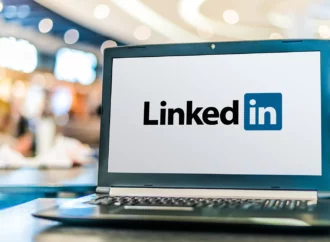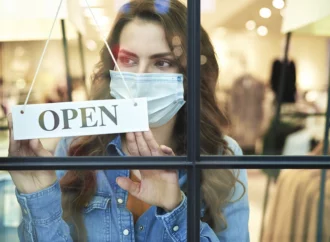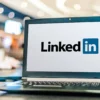Written By: Mary Kaitlin Des Jardins Quality over quantity – an age old saying that not only applies to your social circle, but to your lead generation strategy for your B2B business as well. Honestly, qualifying B2B leads is so important that we decided to write an entire blog about it. Read on to learn
Written By: Mary Kaitlin Des Jardins
Quality over quantity – an age old saying that not only applies to your social circle, but to your lead generation strategy for your B2B business as well. Honestly, qualifying B2B leads is so important that we decided to write an entire blog about it. Read on to learn more about how, and why qualifying your leads should be a vital part of your strategy.
…or if you prefer the “get rich quick schemes”
How:1. Determine what the prospect needs, or even better – anticipate their needs.
2. Confirm that your solution is the right fit
3. Know your prospect’s budget
4. Identify your prospect’s influence as a decision-maker
5. Understand your prospect’s timeframe and urgency level
Why:
Because “67% of lost sales are a result of sales reps not properly qualifying their potential customer before taking them through the full sales process.”
That’s the most simplified way to look at qualifying your leads, but there’s a lot more to learn when it comes to how and why. So, let’s start by touching on how the questions listed above became the standard for lead qualification.
The History of Lead Qualification & Its Various Methods
International Business Machines – better known as IBM, was one of the first companies to develop a standardized framework for B2B companies to use when qualifying leads. Developed between the 1950s-60s IBM introduced the BANT method; an acronym standing for Budget, Authority, Need, and Timeline. While a bit outdated, the BANT method proved very valuable pre-internet era and has since served as an excellent foundation for other lead qualifying methods such as:
There are other lead qualification methods such as, FAINT, ANUM and CHAMP, but it’s most important to find out which framework best fits your business model. Take a look at all of your options here, or if you’re interested in learning how to develop a lead qualification framework that’s customized to your business – check out this free lesson from HubSpot.
So, You’ve Decided on a Framework for Qualifying B2B Leads, Now What?
Now that you’ve decided on a framework that works best for your business, it’s time to talk about lead scoring.
Lead scoring is the process of assigning a numerical value, generally on a point system that ranges from 0-100 to each lead that enters your pipeline. Utilizing a lead scoring system allows you to determine the likelihood that an MQL (marketing qualified lead) will convert to a SQL (sales qualified lead).
Using lead scoring will give you and your sales team “quick wins.” Here are some ways that your leads can “earn” points:
1. Prospect visits the website (+1 point)
2. Prospect navigates to your “resources” page & downloads a whitepaper or a brochure (+5 points)
3. Prospect interacts with your chatbot (+12 points)
4. Prospect fills out your “contact us” form (+35 points)
5. Prospect clicks on your ad (+12 points)
6. Prospect opens your e-blast and subscribes to your weekly newsletter (+25 points)
7. Prospect returns to your website (+3 points)
8. Prospect calls your business (+35 points)
9. Prospect re-shares your social post (+2 points)
10. Prospect signs up to attend a webinar (+10 points)
*Keep in mind that these points have been assigned arbitrarily, and you should assign points as your team sees fit*
You can also attribute points to things like age, location, company size, etc. These are just some examples of how points can be attributed. However, your point attribution system will, and should be unique to your business model and marketing plan.
As a general rule of thumb:
It’s typically recommended that you try to assign lower point values to the “easier” activities, or the one’s that require less engagement, while higher point values should be attributed to activities that require more attention or detail from your prospective client.
When discussing with your sales and marketing teams about how to assign point values to customer engagement activities, it’s important to consistently reference your buyer personas.
Did you know: A purchasing decision is typically made by 6.8 persons
After you and your team have determined how to assign points, be sure to establish a lead scoring threshold so that your lead scores don’t become inflated. Setting a threshold will also alert you as to when it’s time to move MQLs down into the sales funnel. In doing so, your salespeople will be notified about your leads that are most likely to close. Utilizing lead qualification and scoring techniques will not only help shorten your sales cycle, but will also provide insight into which marketing efforts your prospective customers are most receptive to.
“Organizations using lead scoring experience a 77% increase in lead generation ROI. This typically progresses to organizations spending more time with actual, qualified sales ready leads, while automating dynamic messaging to leads that are not yet ready for that personal touch.” (SharpSpring 2020)
If you’d like to dive deeper on how you can ensure your lead scoring model will be successful, Salesforce has a quick and easy read on 5 best practices to utilize when developing your model.
The Importance of Asking the Right Questions
As we mentioned previously “67% of lost sales are a result of sales reps not properly qualifying their potential customer before taking them through the full sales process.”
67% is a serious number – especially when it has a direct effect on your ROI. Developing your buyer personas and creating a well-rounded lead qualification strategy that utilizes lead scoring, can save you and your sales team time and money.
According to Forrest Research expertise in lead nurturing results in a 50% increase in sales-ready leads, along with a 33% decrease in its cost.
Don’t Stress, Technology Can Help.
If developing a lead qualification model seems a bit intimidating, a CRM such as SharpSpring, Salesforce, or HubSpot can help. CRMs allow you to track how your customers interact with your company.
Whether it’s via a phone call, through an e-mail, a form fill, or a paid advertisement, a CRM allows you to see the sequential order in which your customers touch your business. Integrating a CRM into your marketing strategy will help in developing qualified lead criteria and lead scoring. CRMs also allow you to automate your sales and marketing processes.
We’d love to help you develop a better system for qualifying B2B leads! Talk to one of our team members today.
Click Here to Get Help Qualifying B2B Leads















